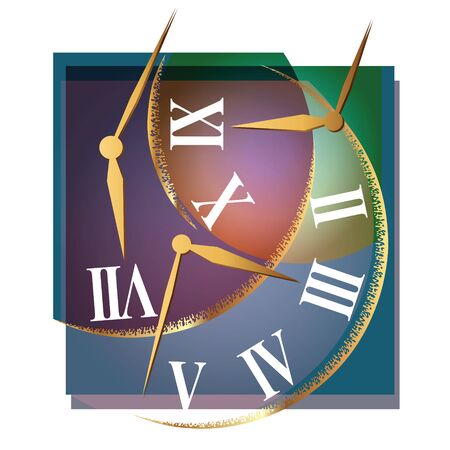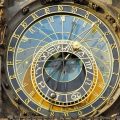Introduction to Royal Traditions and Astrology
The British public’s fascination with the Royal Family is as deeply rooted as the oaks of Windsor Great Park. From coronations to jubilees, royal events serve as milestones in the nation’s collective memory, celebrated with a unique blend of pomp and pageantry. Yet, beneath this reverence for tradition lies another current: a persistent interest in astrology and celestial phenomena. Whether it’s scanning newspaper horoscopes or debating Mercury retrograde over a cuppa, Britons have long indulged in interpreting cosmic signs. These two threads—royalty and astrology—might appear distinct, but they frequently intertwine within the national psyche. As we explore how celestial alignments may influence royal occasions, we uncover a rich tapestry where age-old beliefs subtly shape contemporary perceptions of monarchy and national identity.
2. Birth Charts of Prominent Royals
The British Royal Family has always captivated the public imagination, not only through their official duties but also via the subtle nuances of their personalities and destinies. Astrologers and enthusiasts alike have long speculated about how celestial alignments at birth may shape royal lives. By examining the zodiac signs of key members, we may glean insights into their public personas, leadership styles, and even the national occasions they preside over.
Notable Royal Birth Signs
| Royal Figure | Date of Birth | Zodiac Sign | Key Traits |
|---|---|---|---|
| King Charles III | 14 November 1948 | Scorpio | Determined, intuitive, private |
| Catherine, Princess of Wales | 9 January 1982 | Capricorn | Disciplined, responsible, pragmatic |
| Prince William, Prince of Wales | 21 June 1982 | Cancer (on the cusp) | Caring, protective, diplomatic |
| Duchess of Sussex (Meghan) | 4 August 1981 | Leo | Charismatic, confident, expressive |
| Prince Harry, Duke of Sussex | 15 September 1984 | Virgo | Analytical, adaptable, conscientious |
| Queen Elizabeth II (late) | 21 April 1926 | Taurus | Loyal, steadfast, practical |
The Speculative Impact on Public Persona and Life Path
The interplay between a royal’s zodiac sign and their role within the monarchy is a point of fascination for many in the UK. For instance, King Charles III’s Scorpio nature is often reflected in his persistent advocacy for causes close to his heart—sometimes quietly behind the scenes—mirroring Scorpio’s reputation for depth and tenacity. Catherine’s Capricorn attributes are regularly praised by commentators for her measured approach to public life and her focus on duty.
Meanwhile, Prince William’s Cancerian influence is thought to underpin his emphasis on family values and mental health initiatives. Meghan’s Leo energy has brought flair and assertiveness to her engagements, resonating with both supporters and critics. Virgoan qualities in Prince Harry manifest as a keen attention to detail in charitable work and communication.
This astrological lens provides an additional narrative layer that some believe shapes royal responses during national events—be it jubilees or moments of crisis. While scientific consensus remains sceptical about astrology’s empirical validity, its cultural presence in Britain ensures that star signs continue to be part of popular royal discourse.

3. Celestial Events and National Celebrations
Looking back at the tapestry of British history, the Royal Family’s major milestones—be they coronations, weddings, or jubilees—have often coincided with notable celestial events, sparking both public fascination and media speculation. For example, Queen Elizabeth II’s coronation on 2nd June 1953 took place shortly after a powerful lunar eclipse and during Mercury in retrograde, a fact that astrologers at the time saw as symbolic of transition and new beginnings. Similarly, Prince William and Catherine Middleton’s wedding on 29th April 2011 unfolded under a Taurus Sun, a sign associated with stability and tradition—qualities many hoped would define their union.
Jubilees too have their astrological signatures. The Queen’s Golden Jubilee in 2002 was celebrated as Jupiter moved into Leo, the regal sign often linked to leadership and public recognition. Many Britons reflected on this celestial alignment, interpreting it as an auspicious omen for national unity and continuity. While sceptics might dismiss such correlations as mere coincidence, it’s difficult to ignore the persistent thread of cosmic curiosity woven through our collective memory.
Whether these alignments are meaningful or coincidental remains open to interpretation. However, it is clear that astrology continues to intrigue both the public and pundits alike, providing an additional layer of narrative to royal occasions that already brim with symbolism and tradition.
4. Media, Mysticism, and Public Perception
Within the United Kingdom, public fascination with the Royal Family is a constant presence in both casual conversations and formal reporting. When it comes to the intersection of celestial alignments and royal milestones, British media outlets play a pivotal role in framing narratives and shaping public discourse. Both tabloids and broadsheets have been known to highlight astrological speculation during significant events such as royal weddings, births, and jubilees. The approach varies considerably depending on the publication’s editorial stance, with some indulging in playful conjecture while others adopt a more sceptical tone.
Media Coverage Patterns
| Type of Media | Approach to Celestial Alignments | Common Features |
|---|---|---|
| Tabloids (e.g., The Sun, Daily Mirror) | Sensationalist and often speculative | Horoscopes, astrologer interviews, bold headlines linking star signs to royal traits or fortunes |
| Broadsheets (e.g., The Times, The Guardian) | Analytical or occasionally dismissive | Cultural commentary, expert opinions from historians or astronomers, subtle references to public interest in astrology |
| Broadcast Media (e.g., BBC, ITV) | Balanced and factual | Brief mentions during coverage of major occasions, sometimes inviting astrologers for light-hearted segments |
Public Discourse and Social Sentiment
The British public’s response to these themes is equally nuanced. While many embrace discussions of zodiac signs as light entertainment—especially when they coincide with high-profile royal celebrations—others view such coverage as trivialising serious national events. Social media platforms amplify both perspectives; hashtags related to astrological predictions for royal children or wedding dates frequently trend during these periods.
Cultural Resonance Versus Scepticism
This duality reflects a broader cultural dynamic within the UK: a blend of traditional reverence for monarchy with an enduring appetite for folklore and mysticism. It is not uncommon for Britons to reference “Mercury in retrograde” or speculate about the influence of eclipses on royal fortunes in jest or earnest. Nonetheless, there remains a healthy undercurrent of scepticism, particularly among those who favour scientific or historical explanations over celestial ones.
Conclusion of Media Influence on Royal Occasions
The symbiotic relationship between media portrayal and public perception ensures that discussions around celestial alignments and the Royal Family continue to surface during national milestones. Whether viewed as harmless fun or a reflection of deeper societal beliefs, this interplay contributes to the rich tapestry of contemporary British culture surrounding its monarchy.
5. Modern Attitudes and Cultural Significance
In contemporary Britain, both astrology and the monarchy evoke a complex range of responses, reflecting evolving societal values and a nuanced relationship with tradition. The Royal Family, with its centuries-old legacy, remains a potent symbol of continuity and unity. Yet, public attitudes towards the monarchy are increasingly diverse, shaped by generational shifts, political perspectives, and debates about relevance in modern life.
Astrology, once regarded as little more than superstition, has undergone a quiet renaissance among younger Britons. Many now view horoscopes and star charts as a form of personal reflection or entertainment rather than literal truth. Social media has played a pivotal role in this resurgence, making zodiac memes and birth chart discussions part of everyday cultural conversation. While few would admit to planning their lives around celestial alignments, the language of astrology is woven into the fabric of British popular culture.
When considering national occasions—be they royal weddings, jubilees, or state ceremonies—there is often playful speculation in the media about auspicious dates and signs. Though largely tongue-in-cheek, such commentary highlights how astrological motifs persist in public discourse. It suggests that even in an age of scientific rationalism, many Britons retain an appetite for symbolism and myth-making alongside sober analysis.
The interplay between monarchy and astrology serves as a subtle lens through which to examine our national identity. For some, these traditions foster a sense of belonging and continuity; for others, they prompt critical reflection on what it means to be British in the twenty-first century. Ultimately, whether taken seriously or with a grain of salt, the continued fascination with both celestial patterns and royal rituals reflects our collective yearning for meaning and connection in uncertain times.
6. Conclusion: Stars, Sovereigns, and Shared Stories
In drawing together the threads of monarchy and astrology, we see how the Royal Family and the zodiac have woven a rich tapestry within British culture. The enduring fascination with celestial alignments—whether pondering the Queen’s star sign or speculating on planetary influences during royal occasions—reflects more than idle curiosity; it speaks to a national tradition of blending history, symbolism, and a touch of imagination. The Royals, as both figureheads and family, serve as focal points for collective hopes, anxieties, and aspirations. Similarly, the zodiac offers a framework through which people seek meaning amidst uncertainty. When these two worlds meet—be it in public celebrations like jubilees or in private moments such as royal births—a unique narrative emerges. It is a narrative shaped by centuries-old beliefs yet kept alive by contemporary conversation, media coverage, and everyday speculation at the pub or around the breakfast table. In essence, this interplay between stars and sovereigns does not dictate the fate of the nation; rather, it enriches our shared stories, providing comfort, continuity, and a distinctly British sense of wonder. Whether taken with solemn reverence or light-hearted banter, the ongoing dialogue between royalty and the cosmos invites everyone to partake in an evolving cultural mythos—one that is as much about who we are as where we are headed.


